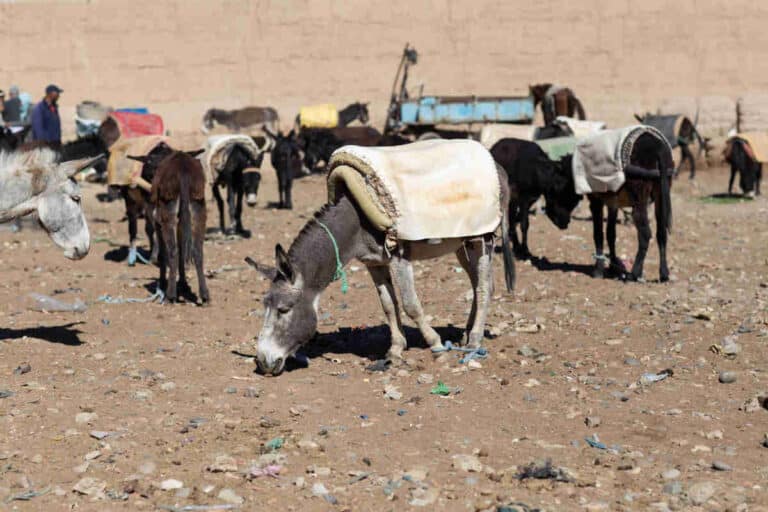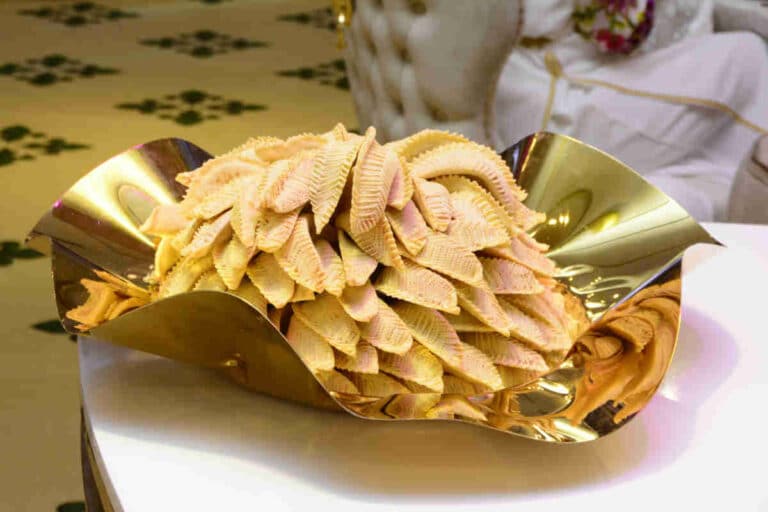Salty dish, first or second course. Sweet dish, for dessert. But what happens when sweet and savory ingredients are combined in this dish? That is the dilemma that every traveler may face when he or she goes to sample a sweet couscous or
seffa
but in this post we solve your doubt. And above all, we explain in depth what it is and what it contains this dish so characteristic of Moroccan gastronomy.
Seffa, the meaning of the sweet version of couscous
As we said in
this other post
the name couscous is given to many dishes based on these grains of wheat semolina. grains of wheat semolinawhich can be accompanied by an infinite number of ingredients. The vast majority are salty, or with other complementary flavor nuances. As an exception, some recipes use dates which, however, provide only a sweet note that does not change the consideration of this couscous as a savory dish for a first course, normally.
But the curious thing is that there is a version of sweet couscous, known as seffa. As it is a special dish, it is eaten on special occasions where the meal becomes a banquet. And the curious thing is that it is offered at the end of the meal, not exactly as a dessert, but as a pre-dessert dish but as a pre-dessert course, something like a transition from the second course to the dessert.
What is in the sweet couscous?
For the sweet couscous to be considered as such, in its preparation and ingredients have great importance sugar, milk and raisins. In fact, while the couscous grains are prepared with the usual steamer, they are also washed down with several cups of milk. And so that the sugar (usually icing sugar) is better integrated into the grains, it is usually boiled beforehand with butter and water. The raisins, on the other hand, are added to the couscous grain base at the end, thus remaining as sweet ‘bits’.
All this is plated in the shape of a mountain, or rather, a volcano. And in the wide crater of the volcano is situated the stew cooked on the side, which may be chicken based with a myriad of spices or ras el hanout. And as a final touch, nuts and dried fruit whole or in pieces, preferably roasted or fried (almonds, walnuts, etc.), as well as a few touches of cinnamon and more powdered sugar.
Although these are usually the basic ingredients, the fact that it is a sweet couscous means that many other ingredients of this type are accepted, especially fruits: you may find it with different varieties of grape or with the mentioned dates, so important in Moroccan cuisine due to the abundance of date palms in this territory.
It must be said that this sweet couscous is a dish shared with the other Maghreb countries, but in Morocco it can take on a distinctive touch: that of replacing the wheat semolina grains with rice grains… Another possible option is to use fine vermicelli noodles. In these cases, the term sweet couscous would no longer make sense, so it is preferable to use the Arabic name (seffa or also
mesfuf
), which integrates this other alternative processing.
Where to eat sweet couscous or seffa
Although it is most traditional to eat sweet couscous or seffa at traditional banquets, such as weddings or large family gatherings, don’t worry if you are traveling to Morocco and have not been invited to such an event: it can also be found on the menu of some restaurants. menu of some restaurants. In that case, you will have to look for it in the dessert section, since it is eaten at the end of the meal, although it cannot really be considered a Moroccan pastry.




